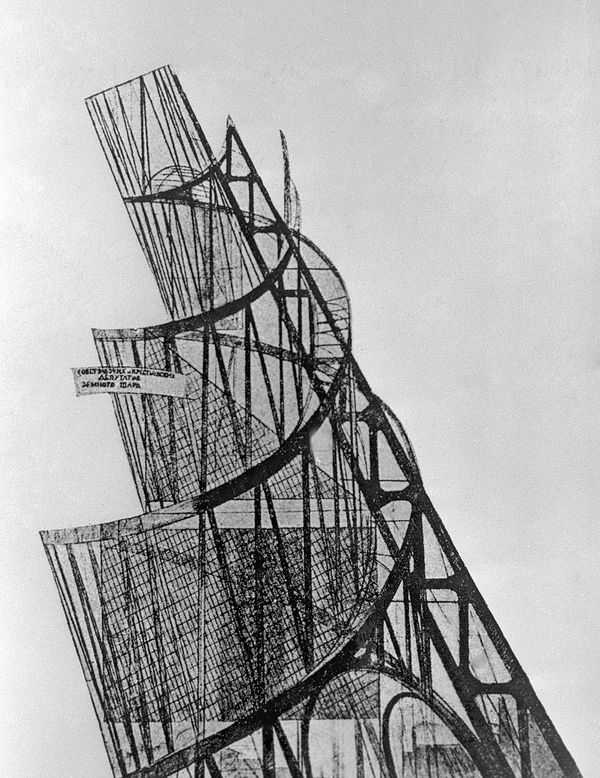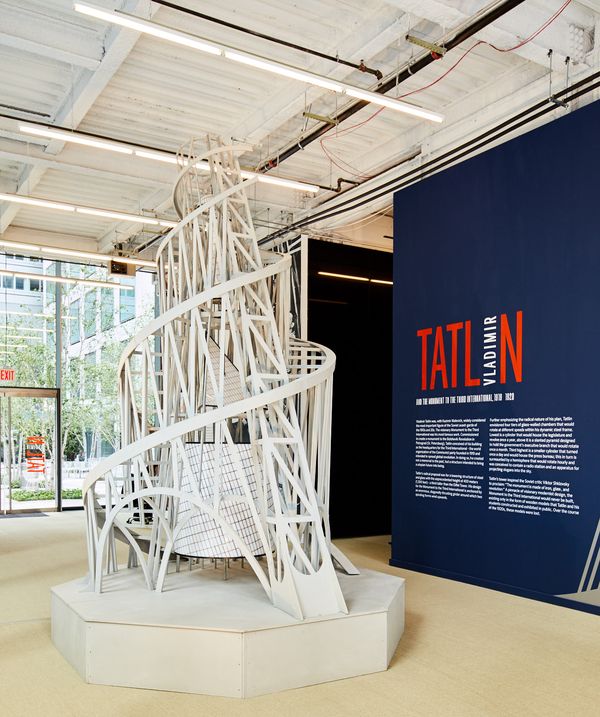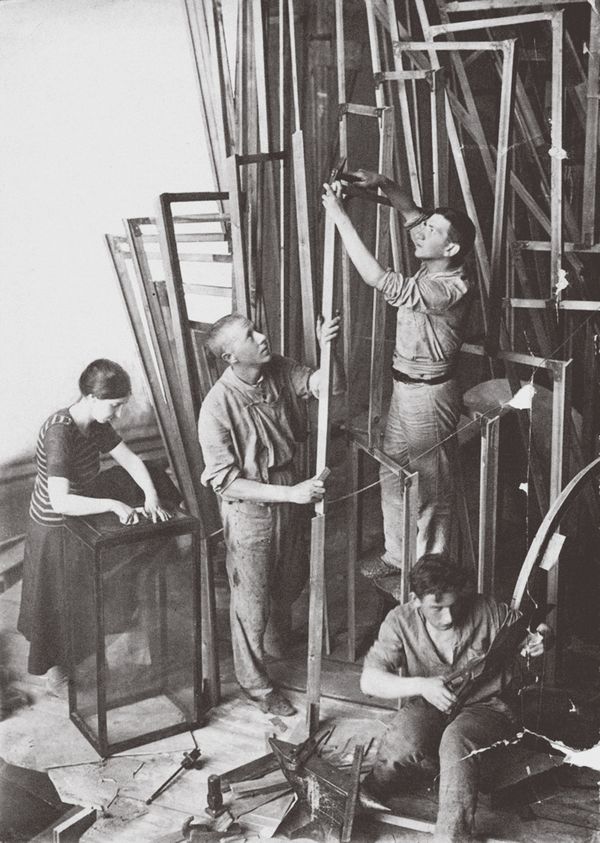Vladimir Tatlin (1895-1956) © Copyright. Model of the Monument 3rd International. Photograph, 1919-1920. Photo Credit: bpk Bildagentur / Art Resource, NY
Vladimir Tatlin was, with Kazimir Malevich, widely considered the most important figure of the Soviet avant-garde of the 1910s and 20s. The visionary Monument to the Third International was his most famous work. Commissioned to create a monument to the Bolshevik Revolution in Petrograd (St. Petersburg), Tatlin conceived of his building as the headquarters for the Third International – the world organization of the Communist party founded in 1919 and intended to spread global revolution. In doing so, he created not a memorial to the past, but a structure intended to bring a utopian future into being.
Monument to commemorate the Third International, 1919-20 (litho), Vladimir Tatlin / Shchusev Russian Architecture Museum / Sputnik / Bridgeman Images
Tatlin’s radical proposal was for a towering structure of steel and glass with the unprecedented height of 400 meters (1,300 feet) – a third taller than the Eiffel Tower. His design for the Monument to the Third International is anchored by an enormous, diagonally thrusting girder around which two spiraling forms wind upwards. Further emphasizing the radical nature of his plan, Tatlin envisioned four tiers of glass-walled chambers that would rotate at different speeds within his dynamic steel frame. Lowest is a cylinder that would house the legislature and revolve once a year; above it is a slanted pyramid designed to hold the government’s executive branch that would rotate once a month. Third highest is a smaller cylinder that turned once a day and would house the press bureau; this in turn is surmounted by a hemisphere that would rotate hourly and was conceived to contain a radio station and an apparatus for projecting slogans into the sky.
Tatlin's tower on view at 432 Park Avenue
Tatlin’s tower inspired the Soviet critic Viktor Shklovsky to proclaim: “The monument is made of iron, glass, and revolution.” A pinnacle of visionary modernist design, the Monument to the Third International would never be built, existing only in the form of wooden models that Tatlin and his students constructed and exhibited in public. Over the course of the 1920s, these models were lost.
Vladimir Tatlin while building the Monument to the Third International, 1919. Found in the collection of State Tretyakov Gallery, Moscow. Photo Credit: HIP / Art Resource, NY.
The structure on exhibition is a careful reconstruction of Tatlin’s Monument to the Third International executed in 1967 and 1968 under the supervision of the influential curator and museum director Pontus Hultén, who would go on to become founding director of the Centre Georges Pompidou, Paris, and the Museum of Contemporary Art, Los Angeles. This model was shown in Stockholm, then traveling to The Machine at the End of the Mechanical Age at the Museum of Modern Art, a landmark exhibition that united modernist innovations with contemporary electronic and kinetic works. Placed in MoMA’s sculpture garden, it was also shown at the 1970 Venice Biennale. This is Hultén’s first reconstruction of Tatlin’s tower, with the second and third models in the collections of Centre Pompidou and Moderna Museet, Stockholm.
Now returning to midtown Manhattan, this extraordinary reconstruction of the Monument to the Third International stands over 15 feet, the same scale as Tatlin’s original model. The dynamic structure is motorized, in accord with the artist’s radical plans to create moving chambers within it. Phillips is honored to present this extraordinary artifact of modernism on the 100th anniversary of its conception, allowing today’s audiences to experience Tatlin’s visionary design.



